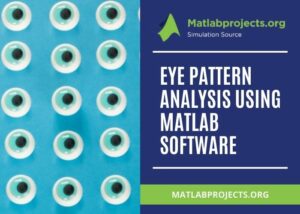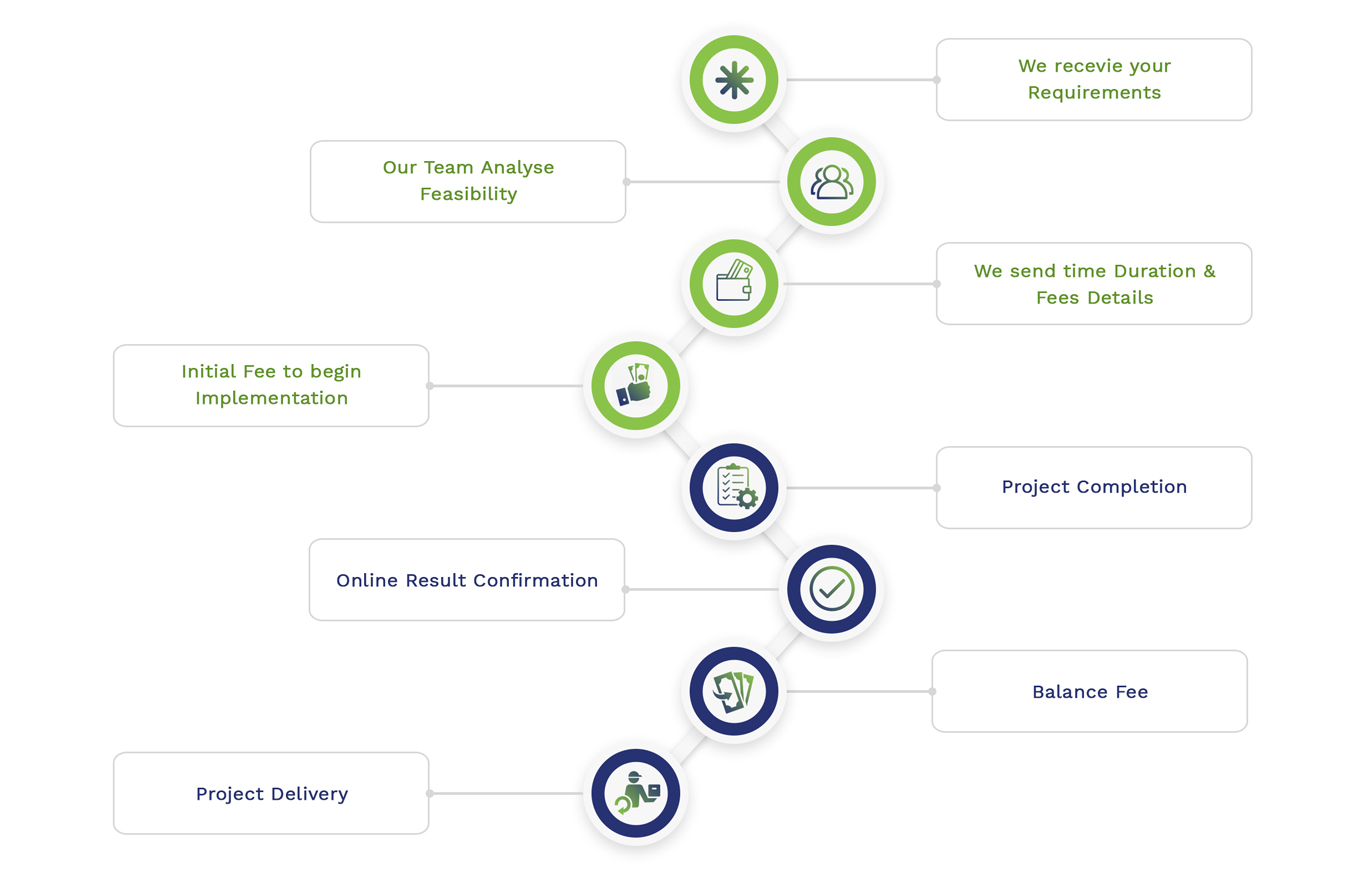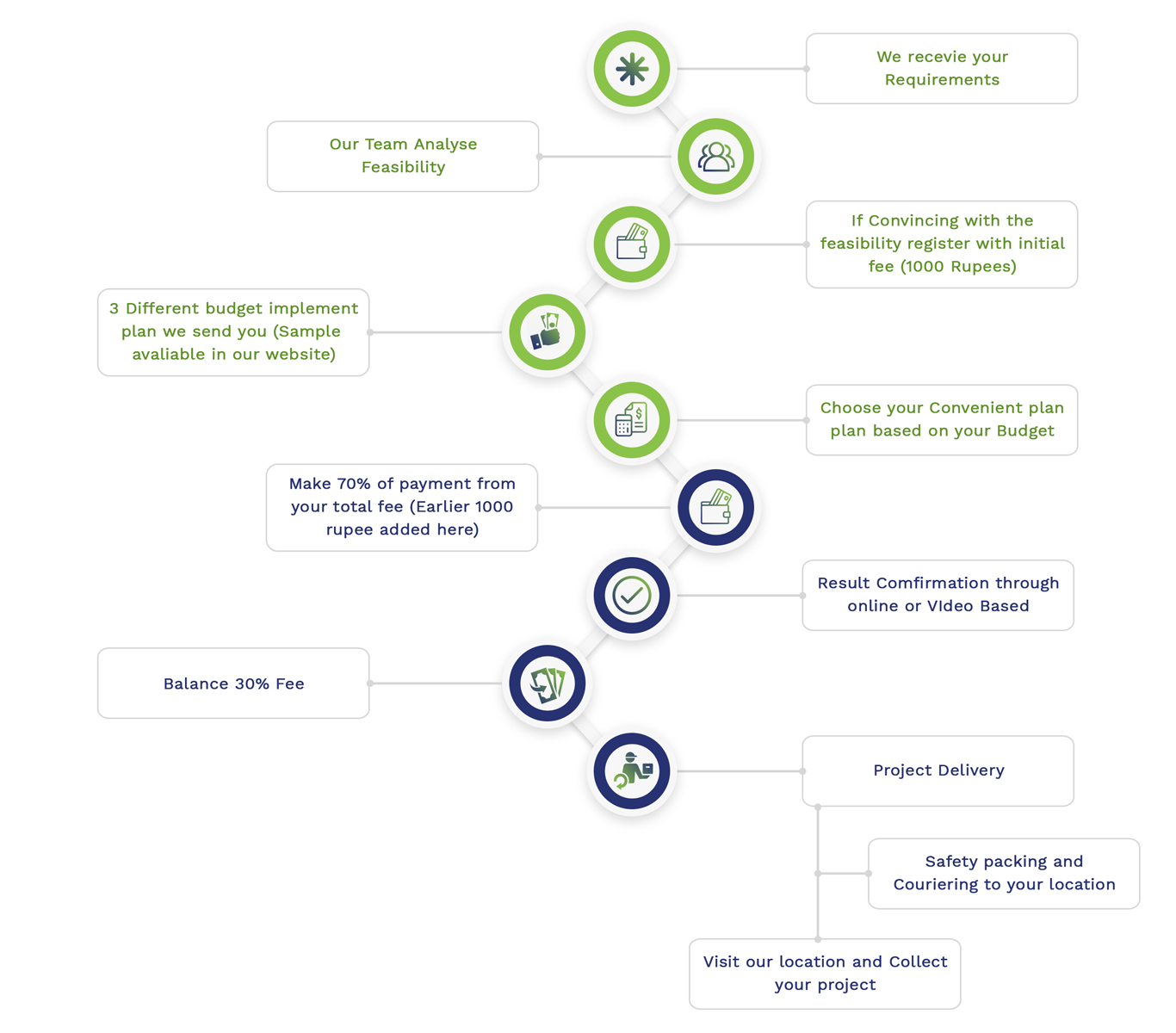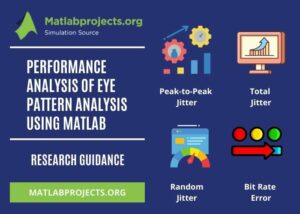The method that aimed to assess the subclass of device efficiency concerning PHY layer over communication standard is called eye pattern. In this, it relates the pre-defined boundaries with eye pattern in the case of the limited waveform. All these boundaries are grouped as a mask. Further, an eye pattern is also called an eye diagram in telecommunication. Through this article, you can collect your required research information for Eye Pattern Analysis using Matlab!!!
By the by, it is treated as an oscilloscope display where a digital signal is recurrently sampled and implemented over vertical input. At the same time, the horizontal sweep is triggered by the data transfer rate. Here, the pattern is displayed as a sequence of eyes among a rails pair.
Overall, it works as a tool for assessing the collective impacts of inter-symbol disruption, channel noise, and diffusion. So that, it improves the efficiency of baseband pulse-based communication.
What do you mean by eye pattern analysis?
The eye pattern is depicted as modulo unit interval (UI) and probability density function (PDF) based on mathematical perception. By the by, it is implemented to find signal probability over every applicable voltage at different UL times. To create small brightness dissimilarity for visualization, the color ramp is utilized on PDF.
To perform visualized analysis on noise margin, ISI severity, and time-error sensitivity, an eye pattern/diagram is intended to generate. For this purpose, it shows the received signal on an oscilloscope. Next, the time-base is trigged at bit rate fraction to produce sweep and last for numerous bit intervals.
What does an eye pattern indicate?
The type of composite signal as eye pattern is designed to reflect jitter, channel bandwidth, fall/rise time variation, and attenuation. If the frequency of the signal rises for particular bandwidth, then the signal is reduced by interference.
Based on display investigation, one can assess various system performances. Further, an eye diagram is used to analyze the signal state as poor synchronization, long, noisy, short, overshoot, slow, undershoot, etc. Here, signal distortion is caused because of noise and inter-symbol interference by eye patterns.
How to compute the eye pattern analysis?
Initially, collect waveform to determine eye pattern by examining waveform in quantized format. For that, it uses enough bandwidth oscilloscope over a real electrical system. Further to assess signal integrity, it creates synthetic data using a circuit simulator.
These two methods are used to simulate power line / arbitrary circuit impact on the measured signal. Also, it verifies whether a signal will still be coherent while transferring via a long cable. At that moment, interpolation is implemented to enhance the count of samples for each UI. An eye pattern makes you understand that in what way noise creates effect over system efficiency. This is represented in the form of visual indication in digital communications.
For your information, here we have given you some important functions that are used to execute Eye Pattern Analysis using Matlab.
How to evaluate eye pattern analysis using Matlab functions?
- eyediagram(x,n)
- In every trace, it considers n samples and x signals to produce an eye diagram
- Then, label the y-axis of the graph in values between -1/2 and 1/2
- Assume that both signal’s 1st value and each nth value ensue integer times
- eyediagram(x,n,period)
- Create labels on the y-axis to the range between –period/2 to period/2.
- eyediagram(x,n,period,offset)
- Define the offset of the eye diagram
- Consider that signal’s (offset + 1)th value and each nth value happen integer times (multi-period)
- eyediagram(x,n,period,offset,plotstring)
- Describe the attributes that going to plot on the eye diagram
- eyediagram(x,n,period,offset,plotstring,h)
- Create an eye diagram based on the existing figure
Although eye pattern analysis is moving in the direction of advancement, it has some research holes. To provide the latest research idea, we undergo deep study on recent eye pattern researches. In this study, we have collected countless research challenges and issues that are not solved effectively.
Likewise, we also found numerous research holes which fail to address so far. Here, we have given some important research holes/gaps that currently we are working for our handhold scholars.
Research Gaps of Eye Pattern Analysis
- Mismatches by Impedance
- In power line, the occurrence of impedance mismatches, stubs, and other imperfections can create reflection as flaws in signal’s edges
- Because of ISI, high delayed reflections than one UI usually render the eye indecipherable. On contrary, the shorter delay is recognized in eye shape
- Assume that power line has one inch (25.4 mm) open-circuited stub which causes capability of creating initial less-impedance impact
- Then, it causes positive reflection at the stub end which has a latency of 0.4 UI s or 320 ps
- Next, signal increases to levels of and a fraction of full value in the case of round-trip stub latency
- Further, if the reflection occurs then the signal increases to full-value
- Emphasis
- In comparison to nominal values, the signal value will increase/decrease while emphasis insisted to a signal for add-on level
- In a signal, eye pattern along with emphasis can be false. So, the PAM signal may have a closer review to disclose actual dissimilarities
- Further, emphasized signal incorporated with a constrained number of legal transitions
- Weak state against strong state
- or 1-1-0 bit pattern
- Strong state against weak state
- or 1-1 bit pattern
- Strong state against strong state
- or 1-0-1 bit pattern
- Weak state against strong state
- Loss of High-Frequency
- The frequency loss over cables and printed circuit board traces is majorly caused because of dielectric loss
- Consequently, it creates a channel to perform as a low-pass filter and reduce signal fall or rise time
- When the channel is lossy or the data rate is large, the signal lacks in value at rapid 1-0-1 and 0-1-0 transition
- Once various identical bits are executed, then it will be balanced which leads to eye vertical closure
- To the end, frequency loss enhances overall eye shape which reduces amplitude and sinusoid
Majorly, current research challenges and gaps are looking for the best solutions. Even though many techniques are already used. it still requires effective techniques. Our developers are adept to find the best research solutions based on the complexity of proposed research problems. Since we improved our skills in all advanced research technologies (techniques and algorithms) in eye pattern analysis. For illustration purposes, here we have handpicked a few important modulation techniques in Eye Pattern Analysis using Matlab.
Modulation Techniques for Eye Pattern Analysis
- NRZ
- In this, the eye pattern is necessary to include two different levels
- Also, all these levels should support smooth transitions
- PAM
- In this, the eye pattern is needed to be N number of different levels
- By the by, the “N” value is based on the PAM order. For instance: PAM-4 means 4 levels
- Moreover, the entire shape must be symmetric on the horizontal axis
- As well as, the spacing between different levels must be uniform
- MLT 3
- In this, the eye pattern is required to have three distinct levels like +1, -1 and 0
- Moreover, the entire shape must be symmetric over the horizontal axis where the 0 levels are placed at 0 volts
- Although all these levels should have a smooth transition from 0 levels to -1 and +1 states, it should not have a direct transition between +1 and -1 states
- Particularly, -1 and +1 should contain equal amplitude
Next, we can see the significant characteristics of eye pattern analysis. Our developers are best not in identifying the best solutions but also in recognizing characteristics that are used to enhance system performance. Since these characteristics are used to improve the quality of service and user experience in pattern analysis. Further, if you are curious to know other interesting facts about eye pattern analysis characteristics then contact our team. We help you to find key aspects of your proposed eye pattern analysis project.
What are the features used for Eye Pattern Analysis?
- Eye Undershoot or Overshoot
- Specify distortion because of signal path disturbances
- Eye Opening (peak-to-peak and altitude)
- Specify the signal’s additive noise
- Eye Closing
- Specify additive noise and inter-symbol intrusion
- Eye Breadth
- Specify jitter impacts and time-based synchronization
In eye pattern diagrams, histograms have a key player role in statistically identifying and inspecting amplitude and time data. As well, this information is computed while monitoring impairments in ultra-speed digital signals.
Overall, this statistical information is highly used to define eye pattern measurements. In amplitude and time alteration, there exist two main aspects in ultra-speed digital data communication as standard deviation and mean.
Histogram Metrics for Eye Pattern Analysis
- Standard Deviation (6-Sigma)
- Mean = ±49.85 %
- 6 sigma = ±3s
- Mean
- Total data values / quantity of values
- Standard Deviation (2-Sigma)
- Mean = ±34 %
- 2 sigma = ±1s
System performance is necessary to improve for any kind of eye pattern analysis project. Since it is intended to prove that your proposed work is efficient than others. For an eye pattern/diagram, there are several measurements like time-based parameters and amplitude-based parameters.
Similarly, more parameters are involved in eye pattern analysis projects using Matlab. Once we grab responsibility for your project development, we assure to use of appropriate libraries, modules, toolboxes, techniques, simulation, and performance metrics for satisfying your project needs.
Matlab Simulation Parameters for Eye Pattern Analysis
- Time-based Parameters
- CRC Jitter
- Eye Breadth
- RMS Jitter
- Total Jitter
- Eye Latency
- Random Jitter
- Eye-Rise Duration
- Deterministic Jitter
- Peak-to-Peak Jitter
- Eye Opening (Horizontal)
- Eye Fall Duration
- Eye Crossing Duration
- Amplitude-based Parameters
- Eye SNR
- Eye Level
- Quality Factor
- Eye Amplitude
- Eye Altitude
- Vertical Eye Opening
- Eye Crossing (Percentage and Amplitude)
In addition, we have also given you other important performance parameters that are used for analyzing the efficiency of the proposed system.
Performance Analysis of Eye Pattern Analysis using Matlab
- Peak-to-Peak Jitter
- It measures the dissimilarity of high data points in histogram
- Total Jitter
- It measures the total value of deterministic jitter and random jitter
- RMS Jitter
- It measures the jitter’s standard deviation based on horizontal histogram
- Random Jitter
- It measures the jitter’s gaussian unbounded component
- It applies the dual-Dirac technique for computing tail standard deviation
- Bit Error Rate
- It measures random jitter by defining the threshold property of eye measurement
- It is assumed to be eye-opening in the range of 10 to 12
- It also approximately equals to Gaussian distribution (7σ point)
To the end, we promise you to provide reliable research assistance on all your required stages of eye pattern analysis study. And also, we assure to give you comprehensive guidance in developing your proposed research idea of eye pattern analysis using MATLAB software. Further, we also extend our service in plagiarism-free manuscript writing (proposal, literature review, paper, dissertation, or matlab thesis).Overall, we take whole duties of your research journey and make you reach your destination in a hurdle-less research path.
Subscribe Our Youtube Channel
You can Watch all Subjects Matlab & Simulink latest Innovative Project Results
Our services
We want to support Uncompromise Matlab service for all your Requirements Our Reseachers and Technical team keep update the technology for all subjects ,We assure We Meet out Your Needs.
Our Services
- Matlab Research Paper Help
- Matlab assignment help
- Matlab Project Help
- Matlab Homework Help
- Simulink assignment help
- Simulink Project Help
- Simulink Homework Help
- Matlab Research Paper Help
- NS3 Research Paper Help
- Omnet++ Research Paper Help
Our Benefits
- Customised Matlab Assignments
- Global Assignment Knowledge
- Best Assignment Writers
- Certified Matlab Trainers
- Experienced Matlab Developers
- Over 400k+ Satisfied Students
- Ontime support
- Best Price Guarantee
- Plagiarism Free Work
- Correct Citations
Expert Matlab services just 1-click

Delivery Materials
Unlimited support we offer you
For better understanding purpose we provide following Materials for all Kind of Research & Assignment & Homework service.
 Programs
Programs Designs
Designs Simulations
Simulations Results
Results Graphs
Graphs Result snapshot
Result snapshot Video Tutorial
Video Tutorial Instructions Profile
Instructions Profile  Sofware Install Guide
Sofware Install Guide Execution Guidance
Execution Guidance  Explanations
Explanations Implement Plan
Implement Plan
Matlab Projects
Matlab projects innovators has laid our steps in all dimension related to math works.Our concern support matlab projects for more than 10 years.Many Research scholars are benefited by our matlab projects service.We are trusted institution who supplies matlab projects for many universities and colleges.
Reasons to choose Matlab Projects .org???
Our Service are widely utilized by Research centers.More than 5000+ Projects & Thesis has been provided by us to Students & Research Scholars. All current mathworks software versions are being updated by us.
Our concern has provided the required solution for all the above mention technical problems required by clients with best Customer Support.
- Novel Idea
- Ontime Delivery
- Best Prices
- Unique Work
Simulation Projects Workflow

Embedded Projects Workflow



 Matlab
Matlab Simulink
Simulink NS3
NS3 OMNET++
OMNET++ COOJA
COOJA CONTIKI OS
CONTIKI OS NS2
NS2







